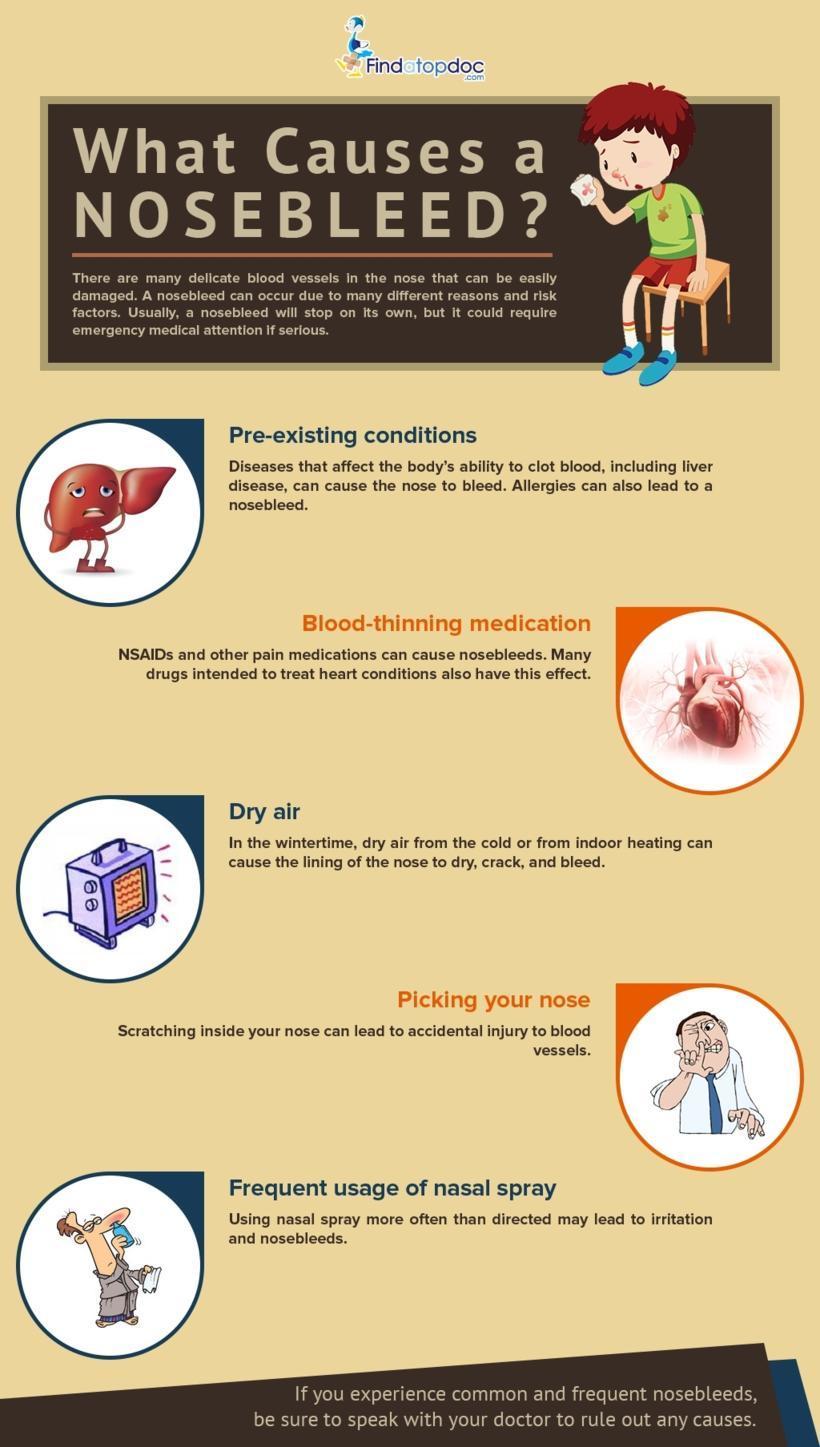
Nosebleeds (epistaxis, nose bleed) can be dramatic and frightening. Fortunately, most nosebleeds are not serious and usually can be managed at home, although sometimes medical intervention may be necessary. Nosebleeds tend to occur more often during winter months and in dry, cold climates. They can occur at any age, but are most common in children aged 2 to 10 years and adults aged 50 to 80 years. For unknown reasons, nosebleeds most commonly occur in the morning hours.
What Causes Nosebleeds?
Most nosebleeds do not have an easily identifiable cause. However, trauma to the nose is a very common cause of nosebleeds. Nosebleeds can be caused by trauma to the outside of the nose from a blow to the face, or trauma to the inside of the nose from nose picking. Other conditions that predispose a person to nosebleeds include:
- exposure to warm, dry air for prolonged periods of time,
- nasal and sinus infections,
- allergic rhinitis,
- nasal foreign body (object stuck in the nose),
- vigorous nose blowing,
- nasal surgery,
- deviated or perforated nasal septum, and
- cocaine use.
Nosebleeds in children can be an anxiety-provoking event, both for the parent and the child. However, most nosebleeds in children are self-limiting and benign, and can typically be managed at home. As in adults, most nosebleeds in children originate anteriorly.
What are the Symptoms of Nosebleeds?
Bleeding usually occurs from only one nostril. If the bleeding is heavy enough, the blood can fill up the affected nostril and overflow into the nasopharynx (the area inside the nose where the two nostrils converge), causing simultaneous bleeding from the other nostril as well. Blood can also drip into the back of the throat or down into the stomach, causing a person to spit up or even vomit blood.
Signs of excessive blood loss include:
- dizziness,
- weakness,
- confusion, and
- fainting.
When to see a doctor if you have Nosebleeds?
Contact a health care practitioner if the person experiences the following:
- repeated episodes of nosebleeds;
- additional bleeding from places other than the nose, such as in the urine or stool;
- easy bruising;
- if the person has nosebleeds and is taking any blood-thinning medications (for example, aspirin or warfarin [Coumadin]);
- if the person has nosebleeds and any underlying disease that may affect blood clotting, such as liver disease, kidney disease, or hemophilia (inability of blood to clot); or
- if the person has nosebleeds and recently had chemotherapy.
Diagnosis
The diagnosis of a nosebleed is generally self-evident and apparent upon seeing the patient, though some individuals may not have any active bleeding by the time they arrive to seek medical care. More importantly, however, your health care practitioner will need to locate the source of bleeding and determine whether the person has an anterior or posterior nosebleed. Furthermore, other less common causes of nosebleeds may need to be sought depending upon the individual's medical history and the findings on the physical exam.
Most people can be seen and discharged from a doctor's office or from an emergency department after treatment for a nosebleed. If a nasal packing has been placed, the patient should not try to remove the packing themselves. The patient needs to be seen again, usually within 2 to 3 days, at which time the packing will be removed by a health care practitioner. Try not to sneeze or cough, if possible. Avoid any strenuous activities, such as heavy lifting or exercise.


